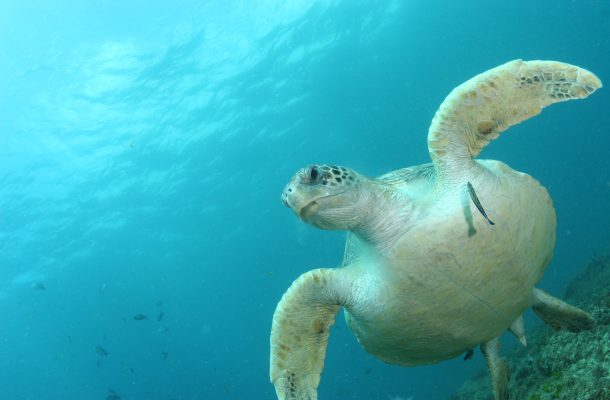How your plastic litter kills sea turtles

The risk that plastic pollution poses to the world’s declining sea turtle populations has been quantified for the first time.
Analysis of nearly 1000 turtles found dead and washed up on beaches around Australia showed that the more plastic a turtle consumes the greater the likelihood that it was killed by that plastic.
Previously, it was unclear as to whether the plastic in our oceans is actually killing sea turtles, or whether they are simply ingesting it without significant harm.
“We knew that turtles were consuming a lot of plastic, but we didn’t know for certain whether that plastic actually caused the turtles’ deaths, or whether the turtles just happened to have plastic in them when they died,” Principal Research Scientist with CSIRO Oceans and Atmosphere Dr Chris Wilcox said.
“In other words, we wanted to know ‘How much plastic is too much plastic?’ for sea turtles.”
The scientists found that once a turtle had 14 plastic items in its gut there was a 50 per cent likelihood that it would cause death. However, that’s not to say that a turtle won’t die if they consume less than 14 pieces of plastic.
“Even a single piece of plastic can kill a turtle,” Lecturer in Animal Ecology at the University of the Sunshine Coast Dr Kathy Townsend said.
“Some of the turtles we studied had eaten only one piece of plastic, which was enough to kill it. In one case, the gut was punctured, and in the other, the soft plastic clogged the gut.”
The research showed that a turtle had a 22 per cent chance of dying if it eats just one piece of plastic.
Sea turtles were among the first animals recorded to be ingesting plastic debris, a phenomenon that occurs in every region of the world and in all seven marine turtle species.
Globally, it is estimated that approximately 52 per cent of all sea turtles have eaten plastic. Determining the effect this is having on turtle mortality is a huge step forwards for understanding the impact of plastic pollution on global sea turtle populations.
“Millions of tonnes of plastic debris is entering our world’s oceans on a yearly basis,” Dr Wilcox said.
“The model we’ve developed can be adapted to help us understand the impact of plastic ingestion not just on individuals, but whole populations of other endangered marine species as well.
“The better we understand the issue, the better equipped we are to address the problem, and work towards viable, scalable solutions.”
Open Forum is a policy discussion website produced by Global Access Partners – Australia’s Institute for Active Policy. We welcome contributions and invite you to submit a blog to the editor and follow us on Twitter, Facebook, Linkedin and Mastadon.














